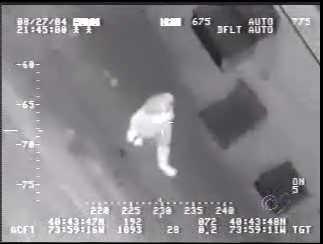
Unmanned Aerial Vehicles ÔÇô UAVÔÇÖs or ÔÇ£dronesÔÇØ as they are called ÔÇô are on the way. Just this week the Los Angeles Times that Customs and Border Patrol agency has been lending their Predator drones to law enforcement agencies for domestic operations. And their use is only going to spread.
The question is, will drones become pervasive spying tools that change the nature of American life? Will we be able to walk out of our front door without wondering at all times whether some eye in the sky might be watching every move we make?
Today weÔÇÖre releasing a report on drones, ÔÇ£Protecting Privacy From Aerial Surveillance: Recommendations for Government Use of Drone Aircraft.ÔÇØ In the report, we discuss the current drone landscape (technology and use), talk about the privacy issues, and conclude with recommendations for protections we believe must be put in place to ensure they donÔÇÖt destroy our privacy.
The fact is, all the pieces appear to be lining up for the eventual introduction of routine aerial surveillance in American life. Those pieces include:
- Pent-up demand by police departments for the technology, which has been restrained so far by the Federal Aviation Administration (FAA) over safety concerns.
- The FAA, which has been largely holding back drone deployment, is under political and industry pressure to open the floodgates and make it much easier for police departments to deploy these aircraft.
- The technology, which has been advancing by leaps and bounds, and ÔÇô like most technology these days ÔÇô will almost certainly continue to get cheaper and more powerful.
- Our privacy laws, which do not currently provide sufficient protection from this technology.
The FAA has rightly been focused on safety, but we also need to get our ducks in a row on privacy before the coming wave of drone deployment hits. In our report, we outline the core principles that ought to govern drone deployment. They include such things as restrictions on their use to specific law enforcement and emergency situations, restrictions on the retention of images, openness and democratic control over how drones are deployed, and auditing and effectiveness tracking so that citizens and watchdogs can tell generally how and how often they are being used, whether they represent a worthwhile public expenditure, and whether they are being abused.
UAVs are potentially extremely powerful surveillance tools, and that power ÔÇô like all government power ÔÇô needs to be subject to checks and balances.
Learn more about privacy: Sign up for breaking news alerts, , and .

